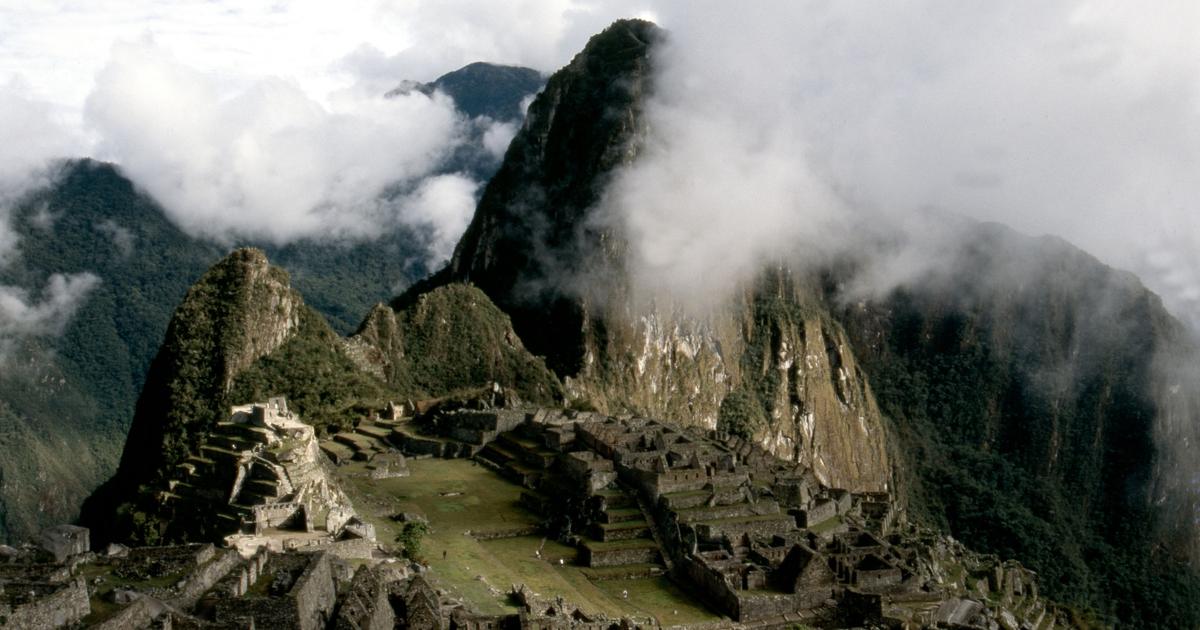Hard blow for the lost city.
Machu Picchu is today the most famous site in the Inca world and one of the most visited archaeological sites in Peru.
However, despite all the exoticism that its name inspires, the city that touches the clouds from the top of the Peruvian Andes would have had a different name in the 15th-16th centuries.
Not Machu Picchu but Huayna Picchu.
The name, preserved and passed down for centuries, was as well known as the site.
At least that is what two specialists of this pre-Columbian empire and of the city which, in the end, would never have been really "lost", believe they have discovered.
To discover
Discover the “Best of the Goncourt Prize” collection
Read alsoItaly calls on the United States to return an ancient copy of the
Colorado beetle
"There is growing evidence that calls into question the connection between the name Machu Picchu and the remains
," reports a study in the
Ñawpa Pacha, Journal of the Institute of Andean Studies
.
Led by historian Donato Amado Gonzalez (Pontifical Catholic University of Peru) and archaeologist Brian Bauer (University of Illinois at Chicago), the investigation carried out on various archival documents and old maps revealed that the The traditional toponym of the site, mentioned by historical sources, corresponded exclusively to Huayna Picchu, before its exploration in 1911 by the American historian Hiram Bingham.
The city found
This name appears in a bundle
of Spanish sources from the middle of the 16th century and is taken up unchanged in the following centuries, up to a modern atlas published in 1904.
natives of the region planned to reoccupy the site, which they called Huayna Picchu”
, specified Brian Bauer for the British daily newspaper
The Guardian
.
"There was really no mystery about the name of the suite
," summarized Donato Amado Gonzalez for the American public media NPR.
Hiram Bingham in 1911, in the middle of the monumental remains of the Inca city which he nicknamed, perhaps incorrectly, Machu Picchu.
Granger/Bridgeman Pictures
From which pre-Columbian rock below did the current toponym of Machu Picchu arise?
This is not attested before Hiram Bingham's publications about his lost city.
According to the notes of his expedition, consulted by the researchers, the name of the site would have been indicated to him by his guide, Melchor Arteaga, a farmer living in the valley located at the foot of the citadel.
The explorer's other Peruvian contacts had nevertheless spoken to him of an Inca place called Huayna Picchu, directing his expedition straight towards the eponymous mountains.
Read alsoThe Sales Council responds to the controversy over the sale of pre-Columbian objects
As the researchers point out, the Inca archaeological site is located on the ridge running between two mountain peaks: Machu Picchu and Huayna Picchu, whose highest points rise respectively to 3082 and 2720 meters.
The name may evoke in historians the memory of the Inca emperor Huayna Capac (or Wayna Kapaq, according to the transcriptions), who reigned between 1493 and the 1520s. The site is not, however, directly associated with him.
The two are content to share the Quechua word "Huayna", meaning "young";
"young king" for Huayna Capac, and "young peak" for Huayna Picchu.
The latter thus faced its more imposing elder, the "old summit" of Machu Picchu.
A German, Augusto R. Berns, had purchased a piece of land in the area in the 1860s and may have even looted the ruins.
Jorge Flores, in an interview with the BBC, in 2011.
Located at more than 2400 meters in the province of Urubamba, nearly 70 kilometers from Cuzco, the Inca palatial city was surveyed by Hiram Bingham in July 1911. The same expedition, decidedly successful, brought the explorer and his traveling companions on the remains of other Inca cities, those of Vitcos and Vilcabamba.
So many "discoveries", the stories of which ignite the imagination of the European public.
“This summer of 1911, Bingham may have had the best month in the history of exploration,”
historian Christopher Heaney
suggested in 2010 for
National Geographic , when he published his biography of the American adventurer.
The explorer returns several times to the site and publishes, in 1948,
Apart from the question of its original name, which may therefore never have been lost, Machu Picchu could also have been explored by Europeans long before the scientific mission led by Hiram Bingham.
“It is now widely accepted in the academic world that Bingham did not discover, or even rediscover, the Inca citadel
,” remarked in 2011, for the BBC, the ethnologist emeritus Jorge Flores (deceased in 2020).
The Peruvian Agustin Lizarraga went there before him, while a German, Augusto R. Berns, had bought a plot of land in the region in the 1860s and had perhaps even looted the ruins.
Can we imagine Peru renaming the historic site again?
Donato Amado Gonzalez tempers.
“The place may not have been called Machu Picchu for the Incas, but today it is its name in the eyes of the whole world.”
In one case as in the other, the Incas will not make much of it.


/cloudfront-eu-central-1.images.arcpublishing.com/prisa/KQHX2IAH4NBMDOOIZFFYL5HN4U.jpg)


